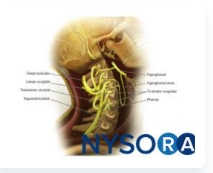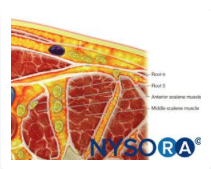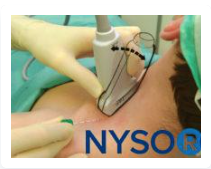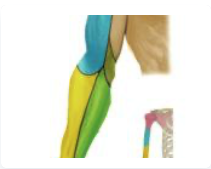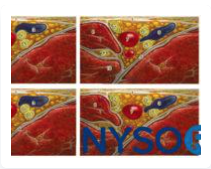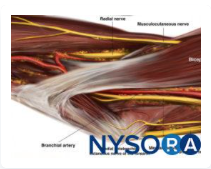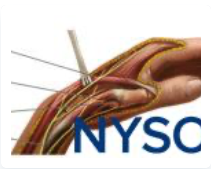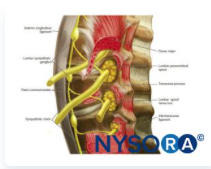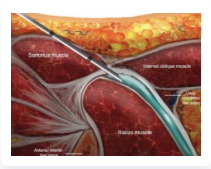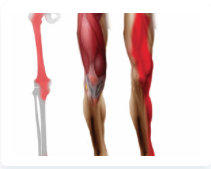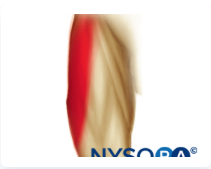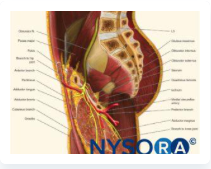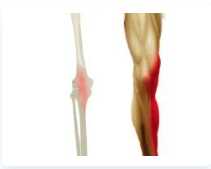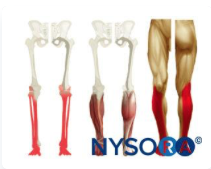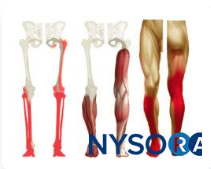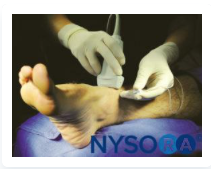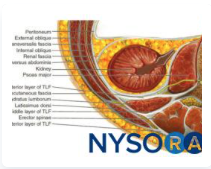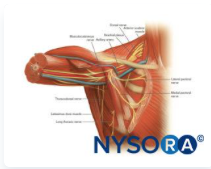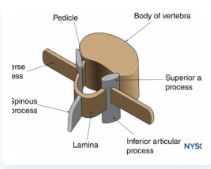Ultrasound-Guided Techniques
Describes indications, relevant anatomy and technique to perform an ultrasound-guided cervical plexus block.
Indications: carotid endarterectomy, superficial neck surgery
Describes the anatomy and practical approaches to the block of the brachial plexus at the interscalene space (above the clavicle). The interscalene approach to brachial plexus blockade results in reliable anesthesia of the shoulder and upper arm
Features the anatomy and block techniques to perform a supraclavicular brachial plexus block.
The supraclavicular approach to the brachial plexus blockade results in anesthesia of the upper limb including often the shoulder because all trunks and divisions can be anesthetized from this location. The skin of the proximal part of the medial side of the arm (intercostobrachial nerve, T2), however, is never anesthetized by any technique of the brachial plexus block and, when necessary, can be blocked by an additional subcutaneous injection just distal to the axilla.
The sciatic block is associated with a high success rate when properly performed. It is particularly well-suited for surgery on the knee, calf, Achilles tendon, ankle, and foot. It provides complete anesthesia of the leg below the knee with the exception of the medial strip of skin, which is innervated by the saphenous nerve. When combined with a femoral nerve or lumbar plexus block, anesthesia of almost entire leg is achieved. ...
Highlights the anatomy, sensory block, and steps to perform an ultrasound-guided axillary brachial plexus block.
The axillary brachial plexus block (including the musculocutaneous nerve) results in anesthesia of the upper limb from the mid-arm down to and including the hand.
Elbow blocks consist of blocks of the median, ulnar and radial nerves at the level at or about the elbow crease. Ultrasound imaging of individual nerves in the distal upper limb allows for reliable nerve blockade. The two main indications for a forearm block are a standalone technique for hand and/or wrist surgery and as a means of rescuing or supplementing an incomplete or failed proximal brachial plexus block.
The wrist block is an effective method to provide anesthesia of the hand and fingers without the arm immobility that occurs with more proximal brachial plexus blocks.
A wrist block results in anesthesia of the entire hand, except the territory of the deep branch of the radial nerve.
This section highlights the sonoanatomy and ultrasound approaches to performing a lumbar plexus block.
Lumbar plexus block (LPB) produces anesthesia of the major components of the ipsilateral lumbar plexus, the femoral nerve (FN), lateral femoral cutaneous nerve (LFCN), and the obturator nerve (OBN).
Features the anatomy and technical procedure to perform an ultrasound-guided fascia iliaca block.
The fascia iliaca block (also called the fascia iliaca compartment block) is considered an alternative to a femoral nerve or a lumbar plexus block. Since the femoral nerve and lateral femoral cutaneous nerve (LFCN) lie under the fascia of the iliacus muscle, a sufficient volume of local anesthetic deposited deep to the fascia iliaca may spread underneath the fascia in a medial and lateral direction to reach the femoral nerve and sometimes the LFCN.
Features the anatomy and block techniques for the femoral nerve and its branches.
Femoral nerve block results in anesthesia of the anterior and medial thigh down to and including the knee, as well as a variable strip of skin on the medial leg and foot. It also innervates the hip, knee, and ankle joints
TDescribes the anatomy of the lateral femoral cutaneous nerve and interventional techniques for anesthesia and pain management. The lateral femoral cutaneous nerve (LFCN) divides into several branches innervating the lateral and anterior aspects of the thigh.
This section features the anatomy and technique description to perform an ultrasound-guided obturator nerve block.
The obturator nerve forms in the lumbar plexus from the anterior primary rami of the L2–L4 roots and descends to the pelvis on the medial side of the psoas muscle.
Highlights the anatomy and technique description to perform an ultrasound-guided saphenous nerve block at the adductor canal.
The saphenous nerve block results in anesthesia of the skin on the medial leg and foot
This section highlights the anatomy and ultrasound-guided approach to block the sciatic nerve in the popliteal fossa.
Sciatic nerve block results in anesthesia of the lower limb below the knee, both motor and sensory, with the exception of the medial leg and foot, which is the territory of the saphenous nerve, a branch of the femoral nerve. The motor fibers to the hamstring muscles are spared; however, fibers to the posterior aspect of the knee joint are blocked
Highlights the anatomy, indications and ultrasound-guided technique description to perform a sciatic nerve block. Anterior, posterior and continuous subgluteal sciatic block.
Indications: foot and ankle surgery, below-knee amputation, analgesia following knee surgery involving the posterior compartment
Features the anatomy, sensory block and technique description to perform an ultrasound-guided ankle block (tibial, deep peroneal, superficial peroneal, saphenous and sural nerves).
An ankle block results in anesthesia of the entire foot.
This section features the relevant anatomy and technique descriptions to perform an ultrasound-guided TAP and QL plane blocks.
The transversus abdominis plane is the fascial plane superficial to the transversus abdominis muscle, the innermost muscular layer of the anterolateral abdominal wall.
Features anatomical relationships, sensory block and technique description to perform an ultrasound-guided pectoralis I-II and serratus plane blocks.
Pectoralis nerve (Pecs) and serratus plane blocks are newer ultrasound (US)-guided regional anesthesia techniques of the thorax.
This section outlines spinal sonography techniques, relevant sonoanatomy, and practical considerations for ultrasound-guided Central neuraxial blocks
Truncal and Cutaneous Blocks
The ultrasound-guided transversus abdominis plane block, or TAP has become a commonly used regional anesthesia technique for a variety of indications. It is largely devoid of complications and can be performed time-efficiently, either at the beginning or the end of surgery for use as postoperative analgesia.
Overzicht van (loco)regionale technieken


